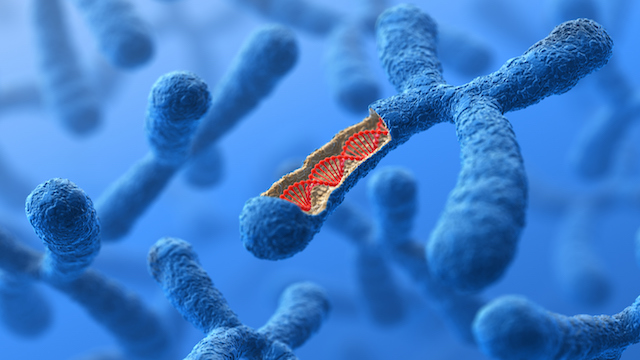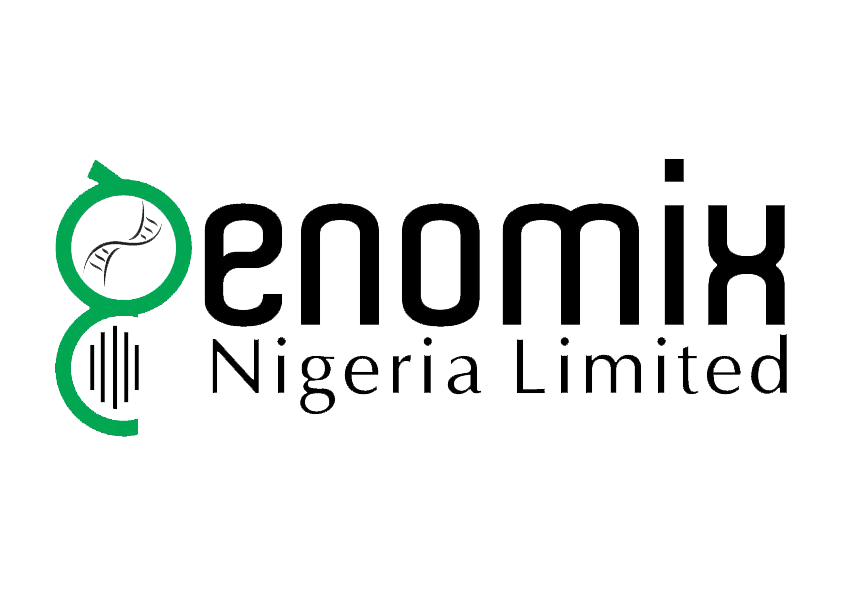
Knowing your genotype is an important thing to do before choosing a life partner. This is because marrying a person who has genotype incompatibility with you may result in giving birth to offspring with sickle cell disorders.
Two people are said to have incompatible genotypes when there is a possibility of them birthing a child with sickle cell disease. Genotype AA is the universally compatible genotype, that is, regardless of who they partner up with, there is no possibility of them birthing a child with sickle cell disease.
Therefore, intending couples must make sure to know their genotypes and be sure it’s compatible for marriage before going ahead to get married.
WHAT IS HB GENOTYPE?
Genotype can be simply defined as the genetic constitution of an individual that is responsible for a certain trait. They are stored in the molecules of DNA called chromosomes.
A hemoglobin genotype is the hereditary composition of an individual’s blood. It is a completely inherited generic identity, and it is unique to each individual.
TYPES OF HB GENOTYPE
Each of our parents has two copies of genes, but can only pass one copy to their offspring. These genes determine our traits like the colour of skin, hair, eyes, etc. This is also the same for the genes for haemoglobin. The type of hemoglobin we inherit gives rise to our genotype.
There are six distinct types of genotypes. The four main common types are AA, AS, AC, SS, while the rare types are SC and CC.
Genotype AA
This group inherits the normal haemoglobin A from both parents. AA is the most common genotype. This genotype is compatible with other genotypes.
Genotype AS
The AS genotype, or Hemoglobin AS, has inherited one normal Hemoglobin A from one parent, and Hemoglobin S from the other parent. The AS is a carrier of the Sickle Cell trait; however, they do not suffer from any of the sickle cell anaemia symptoms. AS occurs mostly in Africans. AS genotype is only compatible with the AA genotype, but incompatible with another AS genotype i.e. AS should not marry another AS, as this can increase the chances of having kids with sickle cell anaemia. The ratio is that one out of four will have sickle cell anaemia (SS), two out of four will have sickle cell trait (AS), and one out of four will have normal haemoglobin (AA).
If a person with AS genotype gets married to someone with AA genotype, there are no chances of Sickle Cell Anemia (SS). The ratio is two out of four having normal haemoglobin (AA), while the other two out of four be carriers of the sickle cell trait (AS).
Genotype SS
The SS genotype, also called Sickle Cell Anemia, occurs when the offspring inherits the Hemoglobin S from both parents. This anaemia causes changes in the shape of red blood cells from round shaped to sickle.
These sickle cell shaped blood cells die quicker than normal red blood cells, hence people with anemia do not receive enough oxygen to the body tissues and organs. They also suffer from symptoms such as shortness of breath, paleness, tiredness, and vaso-occlusion. Vaso-occlusion causes the sickle red blood cells to block blood flow to the tissues, resulting in pain and possible damage to organs (“sickle cell crisis”)
Note: Sickle cell anaemia is common in Africa, SS genotype is only compatible with the AA genotype i.e SS genotype should only marry the AA genotype.
Genotype AC
This genotype, is also called the Hemoglobin C trait. When an individual inherits a normal Hemoglobin A from one parent, and Hemoglobin C from another parent, this results in Hemoglobin C trait (AC). AC is less common but occurs in some percentage of Africans. There are no health problems associated with it.
Note: AC genotype is only compatible with the AA genotype, but incompatible with another AS, AC, SS, SC genotype i.e. AC should not marry another AS, AC, SS, SC, as this can increase the chances of having kids with sickle cell anaemia.
Genotype CC
If an individual inherits Hemoglobin C from both parents, he/she gets Hemoglobin C disease (CC). The disease has symptoms such as mild to moderate anaemia, enlarged spleen, gallstones, and jaundice. This disease is rare, and not all CC persons suffer from the disease symptoms.
Genotype SC
If an individual inherits genes for Hemoglobin S from one parent, and Hemoglobin C from the other parent, he/she will have sickle cell Hemoglobin C disease (SC disease). This disease may have symptoms that range from mild to severe and are similar to the symptoms in sickle cell anemia. However, they are less severe. Symptoms include damage to the hip joint and retina. While some symptoms appear in the first 10 years of life, others appear later or during pregnancy, causing complications. It is a rare type.
|
GENOTYPE COMPATIBILITY CHART |
||
| PARENTS | COMPATIBILITY | LIKELY OFFSPRINGS |
| AA + AA | COMPATIBLE | AA, AA, AA, AA |
| AA + AS | COMPATIBLE | AA, AS, AA, AS |
| AA + SS | COMPATIBLE | AS, AS, AS, AS |
| AA + SC | COMPATIBLE | AS, AC, AS, AC |
| AA + AC | COMPATIBLE | AA, AC, AA, AC |
| AA + CC | COMPATIBLE | AC, AC, AC, AC |
| AS + AS | INCOMPATIBLE | AA, AS, AS, SS |
| AS + SS | INCOMPATIBLE | AS, AS, SS, SS |
| AS + SC | INCOMPATIBLE | AS, AC, SS, SC |
| AS + CC | INCOMPATIBLE | AC, AC, SC, SC |
| AS + AC | INCOMPATIBLE | AA, AC, AS, SC |
| SS + SC | INCOMPATIBLE | SS, SC, SS, SC |
| SS + SS | INCOMPATIBLE | SS, SS, SS, SS |
| SS + AC | INCOMPATIBLE | AS, SC, AS, SC |
| SS + CC | INCOMPATIBLE | SC, SC, SC, SC |
| SC + AC | INCOMPATIBLE | AS, SC, AC, CC |
| SC + CC | INCOMPATIBLE | SC, SC, CC, CC |
| SC + SC | INCOMPATIBLE | SS, SC, SC, CC |
| AC + AC | INCOMPATIBLE | AA, AC, AC, CC |
| AC + CC | INCOMPATIBLE | AC, AC, CC, CC |
| CC + CC | INCOMPATIBLE | CC, CC, CC, CC |
RISKS ASSOCIATED WITH GENOTYPE INCOMPATIBILITY
Sickle cell disease
Hemoglobin is part of the red blood cells that move oxygen to organs and tissues in the body. Hemoglobin A is the most common type of haemoglobin which is found in adults. However, changes in the body can lead to changes in haemoglobin A, resulting in abnormal forms of haemoglobin such as Hemoglobin C and Hemoglobin S. The abnormality may affect the structure of the haemoglobin, its behaviour, its production rate, and/or its stability. The common abnormalities of haemoglobin include haemoglobinopathies (such as sickle cell disease when at least one abnormal haemoglobin S or C is present – AS, SC, SS, CC, AC) and thalassemias (such as alpha thalassemias with reduced amounts of normal haemoglobin. The most commonly encountered abnormal hemoglobin genotypes among Nigerians include AS and SS.
According to the World Health Organization, Nigeria ranks first as the sickle cell endemic country in the world with an annual infant death of 100,000 – representing 8% of infant mortality in the country. The World Health Organization also reported that an average of 150,000 infants are born with sickle cell disease in Nigeria.
For a child to be affected with sickle cell disease, both parents must be carriers. The condition is inherited in an autosomal recessive pattern, which sounds complicated, but essentially means there are four possible outcomes, each carrying a 1 in 4 chance (or 25%) of occurring. These possible outcomes include a 1 in 4 chance the child would have two normal copies; a 1 in 4 chance the child would have sickle cell trait from the mother and a normal copy from the father; a 1 in 4 chance the child would have sickle cell trait from the father and a normal copy from the mother; and a 1 in 4 chance that the child would have two copies of the sickle cell trait; which would mean the child is affected with sickle cell disease. Symptoms of the condition would usually begin in early childhood.
Sickle cell disease (SCD) is a monogenic disorder. In an individual with sickle cell disease, the red blood cell becomes misshapen and rigid, resembling the shape of a sickle, when the haemoglobin is de-oxygenated (releases oxygen to the organs). This process is called sickling and causes a wide range of clinical complications. SCD is characterized by haemolytic anaemia, vaso-occlusive crises, relentless end-organ injury and premature death. Homozygous inheritance of HBS produces the severest form of the disease- sickle cell anaemia (SCA).
Sickle cell carriers
Sickle cell carriers have inherited one normal haemoglobin A gene and one sickle haemoglobin gene.
These individuals should be cautioned to be careful in situations where there may be a reduction in the supply of oxygen, for example when having a general anaesthetic or during activities such as deep-sea diving or mountain climbing. However, they do not have a condition which requires treatment.
POSSIBLE SOLUTION TO GENOTYPE INCOMPATIBILITY
One major solution to genotype incompatibility is:
IVF with Pre-implantation Genetic Testing- Monogenic disorders (PGT-M)
In vitro fertilization (IVF) with Preimplantation Genetic Testing for Monogenic disorders/single gene defects is one method to prevent having a child with sickle cell disease or other genetic diseases such as cystic fibrosis, beta-thalassemia etc, before conception.
IVF involves the woman taking hormonal injections to stimulate her ovaries to make multiple eggs. The eggs are retrieved and the man’s sperm is injected into each egg, often resulting in multiple embryos. The embryos grow in the laboratory until the blastocyst stage, which is typically day five or day six. At this time, embryo biopsy is carried out, which involves taking a small sample of the cells of the trophectoderm -the part that forms the placenta from the embryo and sending it for analysis. The analysis of the embryo is known as Preimplantation Genetic Testing for Monogenic Disorders (PGT-M), formally known as Preimplantation Genetic Diagnosis (PGD).
The results would state which embryos have chromosomal issues and are affected with sickle cell disease as well as sickle cell carriers, and which embryos are normal. The couple and the doctor would then make a decision regarding which embryo to transfer.
PGT-M is not only specific to sickle cell disease, it also involves people who are at high risk of passing on a specific single gene disorder e.g. Cystic fibrosis, alpha and beta thalassemia etc.

Recent Comments